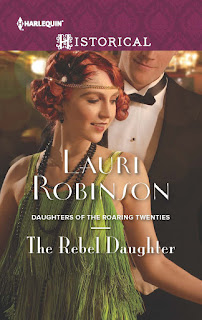It’s so hot here in Texas and recently my air conditioner
broke. It was 94 degrees in the house. I thought I was going to kill someone-
it made me feel so cranky. I wondered how the pioneers did it. I started
reading from this site http://www.america101.us/trail/Jumpingoff.html
and it explains a lot but to me it all sounds impossible. They were certainly
brave, hard-working people who made the trip west.
The Oregon Trail
Jumping Off Cities
The Missouri River heads due west from St.
Louis; so most emigrants loaded their wagons onto steamships for the
upstream journey. It was easy traveling, but it didn't last long. Two-hundred
miles from St. Louis, the Missouri takes a cruel turn to the north. So the
pioneers unloaded their wagons at any one of several small towns along the
Missouri river which they called "jumping off" places. Independence
was the first option. Further upstream was Westport, St.
Joseph, Omaha
and Council Bluffs. The economies of these frontier towns depended
on emigrants passing through, so many hired agents to go east and badmouth the
competing cities.
Emigrant William Rothwell:
"I have never in my life heard as many false statements as were told us in
coming up here. We were frequently told that at least 15 to 20 cases of cholera
were dying daily in St. Joseph".
In reality, no one died of cholera in St. Joseph that year.
Each spring these small hamlets became raucous boomtowns--as
thousands of emigrants camped for days, or weeks while getting ready to begin
the journey. Independence was by far the most popular point of departure in the
Trail's early years.
Emigrant/author Francis Parkman:
"A multitude of shops had sprung up to furnish emigrants with necessaries
for the journey. The streets were thronged with men, horses and mules. There
was an incessant hammering and banging from a dozen blacksmiths' sheds, where
the heavy wagons were being repaired, and the horses and oxen shod. While I was
in the town, a train of emigrant wagons from Illinois passed through--a
multitude of healthy children's faces were peeking out from under the covers of
the wagons."
Waiting
By mid April, the prairie outside Independence was packed with emigrant
campers-- often over three square miles worth. It was so crowded, one emigrant
spent four days just trying to find his friends. This entire mass of humanity
was waiting for the grass to grow. Heading west too early meant the grass
wouldn't be long enough for the animals to graze along the way--a mistake that
could be fatal.
Supplies
Emigrant Lansford Hastings:
"In procuring supplies for this journey, the emigrant should provide
himself with, at least, 200 pounds of flour, 150 pounds of bacon; ten pounds of
coffee; twenty pounds of sugar; and ten pounds of salt."
A family of four would need over a thousand pounds of food
to sustain them on the 2000 mile journey to Oregon. The only practical way to
haul that much food was a wagon.
Wagons
Huge conestoga wagons were never used by the pioneers--they were just too
unwieldy. Instead, the emigrants used small farm wagons. Although they
appear simplistic, farm wagons of the 1840s were
technologically-advanced vehicles. For example, the complex undercarriage
centered around a kingpin, which allowed the front wheels to pivot, so the
wagon could turn easily. And the front wheels are smaller than the ones in
back--which also helped the wagons to round sharp corners.
Even the width of the wheels was carefully calculated. Wide
wheels were more effective in soft, sandy soil. Narrow wheels worked better on
hard surfaces.The cotton covers were typically drawn shut at both ends to keep
out the incessant dust. To keep out the rain, the covers were treated with
linseed oil, but most eventually leaked anyway.
The wagon box measured only four feet by ten feet. Most
emigrants loaded them to the brim with food, farm implements and
furniture--often over a ton of cargo.
All this was supported by massive axles. If one broke, the
travelers were in serious trouble. Without a spare, they would be forced to
abandon their wagon or reconfigure it as a two-wheeled cart.
Most wagons had several handy options: a toolbox on the
side, a water barrel, and most importantly, hardwood brakes.
By late April or early May the grass was long enough--and
the journey began.
Congestion
Hear from historian
Larry Jones
When it was finally time to go,
everyone wanted to get started at the same time--and the result was often a
huge traffic jam.
Even worse were greenhorns from cities back east, who had never before yoked an
oxen or driven a mule team. They tipped their wagons, bumped into trees and
couldn't even get their animals to go in the right direction.
Overpacking
Only a few miles outside of Independence, nearly all the emigrants realized
they had grossly overloaded their wagons. Their only choice--start throwing
things out.
The trail was so littered with this debris, that scavengers
from the jumping off towns would collect full wagon loads of flour, bacon--even
cast iron stoves.
Jumping off
Starting the adventure of a lifetime
http://www.america101.us/trail/Jumpingoff.html
If you get a chance
read more at this site- fascinating!!
Kathleen Ball:
Sexy Cowboys and the women who love them...
Finalist in the 2012 RONE Awards.
Top Pick, Five Star Series from the Romance Review.
Kathleen Ball writes contemporary and historical western romance with great
emotion and memorable
characters. Her books are award winners and have appeared on best sellers lists
including
Amazon's Best Sellers List, All Romance Ebooks, Bookstrand, Desert Breeze
Publishing and
Secret Cravings Publishing Best Sellers list. She is the recipient of eight
Editor's Choice
Awards, and The Readers' Choice Award for Ryelee's Cowboy.
There's something about a cowboy....
Http://www.kathleenballromance.com











